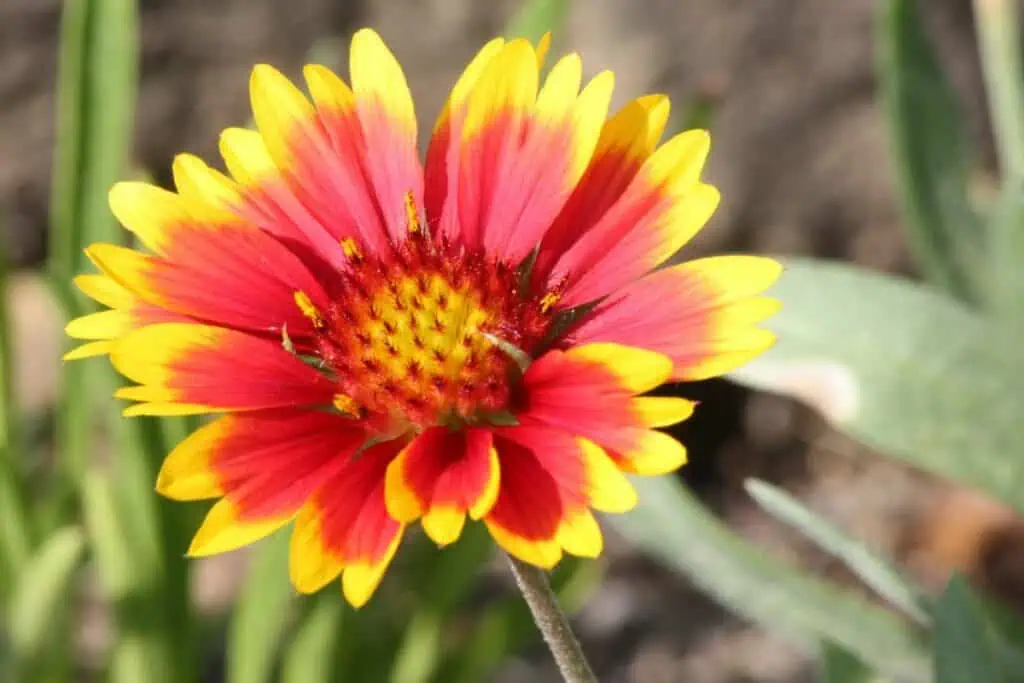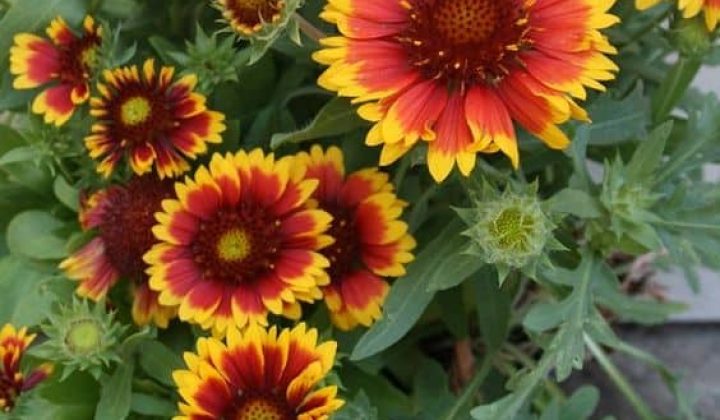Blanket flowers, also known as Gaillardia, present a compelling option for gardeners and nature enthusiasts. Their vibrant hues may catch your eye, but the appeal of these hardy perennials extends far beyond their striking appearance. Flourishing across the state of Florida, they have piqued the interest of many for their exceptional bloom duration and their role in supporting local ecosystems by attracting a variety of pollinators.
As you explore the world of gardening, considering blanket flowers for your landscape goes beyond aesthetics. These plants are not only a feast for the eyes with their rich, fiery colors but also serve a crucial function in the garden. Their hardiness and ability to draw in beneficial insects make them an excellent choice for anyone looking to add more than just beauty to their outdoor spaces.
1. The Resilient Blossom of the Blanket Flower

The blanket flower enlivens gardens with its robust flowering period. Flourishing tirelessly from summer deep into autumn, it lends enduring color to your garden beds. Varieties in Florida begin their display in mid-spring, offering an extended season of vibrance.
Boasting fiery hues of red and yellow, alongside shades of orange, this perennial is favored for its eye-catching ‚firewheel‘ patterns. These blossoms are not only a feast for the eyes but are self-sowing, ensuring a seamless succession year after year without the need for replanting.
Resistant to cooler conditions, the blanket flower is versatile. While predominantly a perennial, it adapts well as an annual in colder regions, providing a shorter yet equally striking display.
2. Magnet for Winged Creatures
- Vibrant hues captivate hummingbirds and butterflies
- Rich nectar centers encourage repeat visits
- Seed phase boosts small bird visitors like goldfinches and sparrows
Incorporate these lively blossoms into your butterfly or meadow gardens to enhance allure, or intersperse them among your vegetables to potentially boost harvests.
3. Effortless Growth of Blanket Flowers
Growing blanket flowers from seeds is straightforward. You have the flexibility to plant seeds directly in your outdoor garden or pre-sow them indoors, around six weeks before the last frost of spring.
For an earlier bloom and vibrant garden, pre-sowing indoors is the technique to choose. Here’s how you manage it:
- Indoor Sowing Instructions:
- Sow seeds in damp seed starter soil.
- Barely cover with dirt.
- Enclose with a humidity dome or plastic to retain moisture.
Once sprouts appear, transfer them to an area with soft, indirect sunlight. Transition your seedlings to the outdoors when they reach approximately six inches in height.
- Propagation from Roots: Blanket flowers can also be cultivated from root cuttings. If acquaintances have these plants, consider asking them for a cutting.
4. Nurturing Your Wildflowers
Gaillardia, commonly known as blanket flower, blooms effortlessly and is incredibly low-maintenance.
Minimal attention is required once settled in a spot that basks in full sunlight. There’s no need to worry about regular watering or nutrient-rich soil for these resilient flowers to showcase their vibrant colors.
As hardy plants, blanket flowers adapt to various environments, thriving in both native and adapted regions across the US. So, bypass soil alterations and fertilizing routines for these to reach their peak.
Pruning isn’t a necessity. However, to promote fuller growth and more flowering, consider removing wilted blooms. This directs the plant’s energy towards producing more vivid blossoms rather than seeds.
For those preferring a self-sustaining garden, allowing a few blooms to seed is a wise choice to facilitate natural reseeding, thus eliminating the need for replanting next season.
Awareness tip: Directly sown seedlings can be mistaken for common weeds like dandelions. It’s wise to confirm their identity through flowering before weeding. Additionally, dandelions can serve as a complementary companion to the lively hues of your blanket flowers.
5. Resilient to Heat and Water Scarcity

This particular plant thrives in warm, arid conditions. It stands up well to intense sunlight and is adept at growing in both sandy and saline soils, making it an excellent choice for seaside gardens.
- Heat resistance: Flourishes in high temperatures.
- Drought resistance: Can survive with minimal water once established.
- Soil adaptability: Grows in sandy and saline soil types.
Initial watering is necessary until the plant is fully rooted and capable of sustaining itself.
6. Diverse Gaillardia Varieties
When selecting Gaillardia plants, a range of hues and sizes are at your disposal, ensuring you find the perfect match for your garden’s aesthetic.
Classic Varieties:
- Scarlet Halo: With its striking red petals edged in yellow, typically matures within three months and reaches around one foot in height.
- Red Dome: Recognizable by its red petals circling a brown-red heart, complemented by a fringe of yellow. It can grow up to three feet in optimal conditions.
Hybrid Options:
- A crossbreed known as Grandiflora Blend presents a collection of diverse cultivars. Notable among these are:
- Vivid Selections:
- ‘Arizona Apricot’: Yellow petals blend into orange at the core.
- ‘Arizona Red Shades’: A deep red with subtle yellow edges.
- Vivid Selections:
- A crossbreed known as Grandiflora Blend presents a collection of diverse cultivars. Notable among these are:
Unique Offerings:
- ‘Celebration’: A solid red variety for a bold statement.
- ‘Fanfare’: Noted for its distinctively shaped petals.
- ‘Oranges and Lemons’: Offers a delightful peach hue.
Steady Hues:
- Mesa Series:
- ‘Mesa Yellow’: Bright yellow blossoms.
- ‘Mesa Peach’: Soft peach tones.
- ‘Mesa Red’: Rich, deep red flowers.
- Mesa Series:
With these options, you can transform your garden into a vibrant retreat that attracts an array of pollinators.
7. Establishment Across U.S. Regions
Blanket flower thrives as a perennial across various regions of the United States. Its presence is prominent in:
- The West: Known for its adaptability to the arid climates.
- New England: Enriches the diverse flora of these states.
- The Upper Plains: Provides a natural aesthetic to the landscape.
- Great Lakes Area: Complements the freshwater ecosystem.
This flower is an integral part of the local ecosystems, supporting pollinator populations without overwhelming your garden’s balance. It’s not only a native flourish in these areas but also an established, non-invasive addition in various North American habitats and globally.
Hybrid blanket flowers, igniting your garden since 1857 with their vibrant colors, are bred to remain non-aggressive amidst your other flora. Incorporating these enduring blooms into your garden both supports local wildlife and adorns your space with a splash of natural vibrance.
